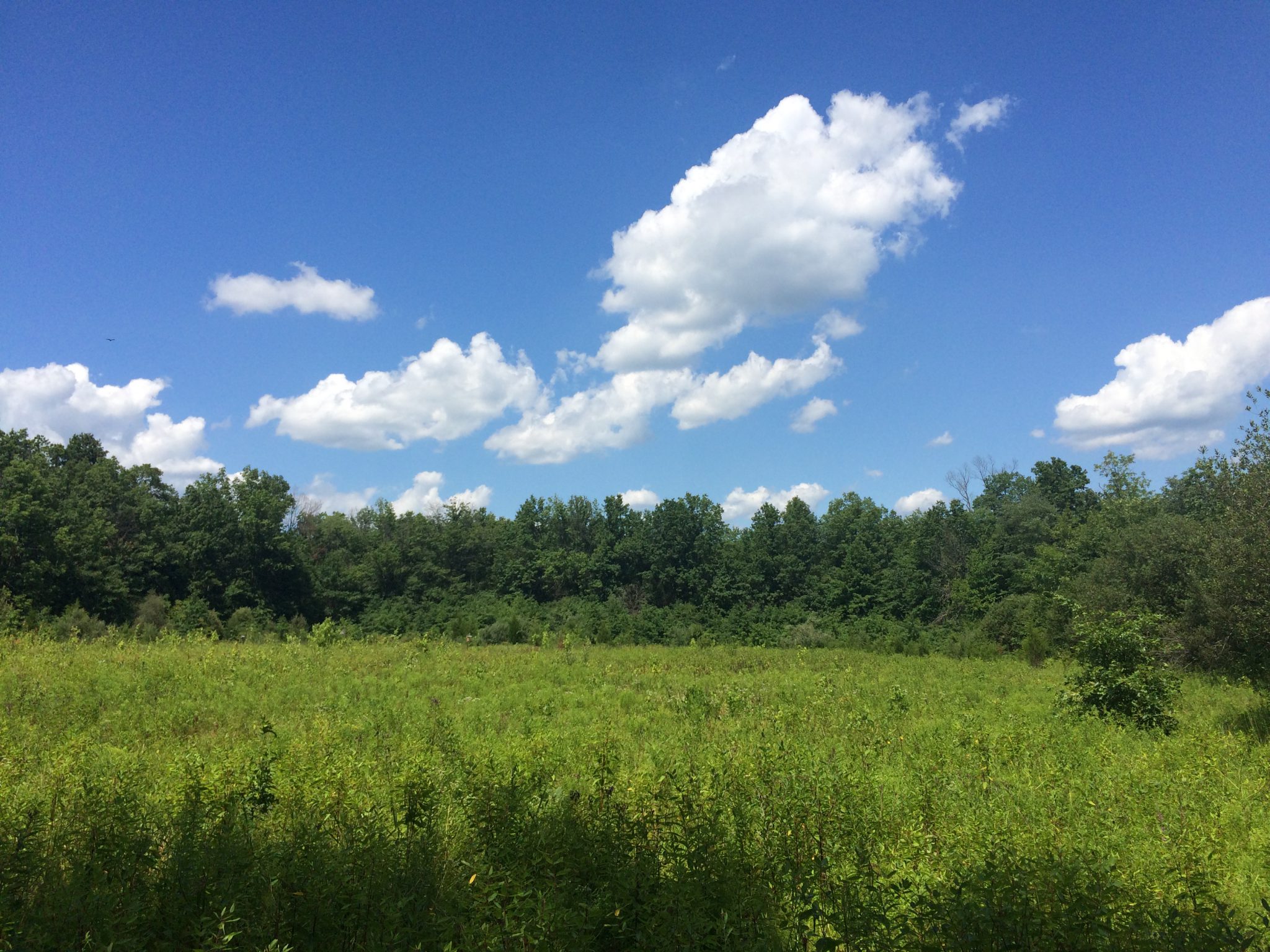When it comes to the health of wildlife, we don’t often think of the edges of the forest. However, the part of the forest that meets a field is just as important as the forest or the field itself, serving its own purpose within this complex ecosystem and providing shelter for field and forest species alike. Many species use the forest edge for nesting, feeding, and traveling. For example, the indigo bunting, an “edge specialist,” has made the forest edge its primary habitat.
Heritage Conservancy’s conservation stewardship staff have been diligilently working to improve the forest edges on our preserved properties, particularly at the Quakertown Swamp Preserve. There are several methods that our staff has undertaken to improve these forest edges, including cutting, planting, allowing for natural succession, and adding brush piles and nest boxes.
The main goal of forest edge improvement is to increase available food and cover along a forest edge. This is achieved by creating a variety of vegetation types and layers, with a gradual transition from short herbaceous vegetation to tall trees. Multiple layers present in vegetation provide more places where wildlife can feed and find nesting, resting, or escape cover. According to recent studies, the nesting success of birds is greater along “complex” edges with multiple layers of vegetation than along “simple” edges with fewer layers of vegetation.
A thriving edge is a thriving forest!
